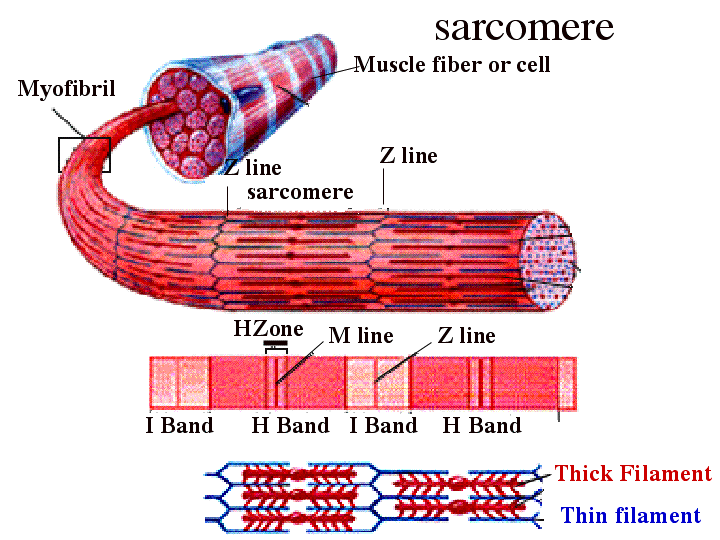If you want to become stronger and faster and have greater endurance, you need to exercise on one day intensely enough to damage your muscle fibers and feel sore on the next day, and then train at reduced intensity for as many days as it takes for your muscles to heal and the soreness to lessen. Then you take your next intense workout. Knowledgeable athletes in most sports train by stressing and recovering because:
• You can’t make a muscle stronger unless you damage muscle fibers. You can tell you are exercising intensely enough to damage them if your muscles feel sore the next day.
• You can’t improve your maximal ability to take in and use oxygen unless you train intensely enough to become short of breath.
Even if you are not a competitive athlete, you can gain greater exercise health benefits by adapting to the same stress and recover program. It will make your heart and skeletal muscles stronger and increase blood flow to your heart.
The faster your muscles recover from an intense workout, the greater your improvement. The key to training is to speed up your recovery so you can take your next intense workout as soon as possible. Anabolic steroids, the banned performance-enhancing drugs, improve athletic performance in part by helping muscles recover much faster from hard workouts, but they also increase your chances of suffering a heart attack in the future.
How Muscles Become Stronger
Muscles are made up of thousands of fibers just as a rope is made of threads. Each fiber is made up of blocks called sarcomeres joined end to end at the Z-lines like a line of bricks. Muscles contract only at each Z-line, not along the entire length of a fiber.
 Intense workouts cause muscle damage, which can be seen as bleeding into the muscles themselves and disruption of the Z bands that hold the muscle sarcomeres together. Significant increases in muscle strength and size come only with workouts intense enough to break down muscle Z-lines and cause inflammation. When muscles heal they become stronger and larger.
Intense workouts cause muscle damage, which can be seen as bleeding into the muscles themselves and disruption of the Z bands that hold the muscle sarcomeres together. Significant increases in muscle strength and size come only with workouts intense enough to break down muscle Z-lines and cause inflammation. When muscles heal they become stronger and larger.
Avoiding Injuries During Intense Workouts
To avoid injuries, first warm up for 10 or more minutes by going at a slow pace. Then pick up the pace by running, skiing, cycling,or jogging until you start to feel a burning in your muscles or start breathing hard, usually after about 5 to 30 seconds. Then slow down. When you have completely recovered your breath and your muscles feel fresh again, start your next interval. Alternate picking up the pace and slowing down for full recoveries until your legs start to feel stiff and then cool down by exercising at a slow pace for at least 10 to 15 minutes. You can help to avoid injuries as long as you listen to your body when it tells you to reduce the intensity of your workout. Non-competitive athletes avoid injuries best when they use intervals lasting less than 30 seconds and back off each interval when they feel their muscles just starting to burn.
Recovery Days
Most athletes in endurance and strength sports exercise on their recovery days and do not plan to take many days off. However, on recovery days, they work at a markedly reduced intensity to put minimal pressure on their muscles. If you develop pain anywhere that gets worse as you continue exercising, you are supposed to stop for that day. Active recoveries on easy days at low intensity make muscles tougher and more fibrous so your muscles can withstand harder intense workouts on your intense days.
Almost all top runners, cyclists and weight lifters do huge volumes of work, and most of it is on their less-intense recovery days. The stresses of intense workouts are extreme; the recoveries take a long time and are done at low pressure on the muscles. Top endurance runners run more than 100 miles per week, cyclists do more than 300 miles per week and weight lifters spend hours each day in the gym.
Research to Improve Training Methods
New training methods are developed by athletes and coaches. Then when these athletes win competitions, scientists do studies to show why the new training methods are more effective. The literature is full of conflicting reports, but most athletes do more than 85 percent of their training loads less intensely on their recovery days. One study showed that runners recover faster by taking a relaxed swimming workout 10 hours after high intensity interval running, rather than just resting (International Journal of Sports Medicine, January 2010). In another study, runners recovered strength and power faster after a marathon by resting for five days compared to those who ran slowly (Journal of Applied Physiology, December 1984). Active recovery should be of limited intensity that does not interfere with the healing process (Scandinavian Journal of Medicine & Science in Sports, June 2009).
Recover Faster by Sleeping
Athletes in intense training recover faster by getting off their feet after they finish their hard workouts and not even walking until it is time for the next day’s recovery workout. Every athlete who trains for competition in sports that require endurance learns sooner or later that after exercising long and hard, you fell sleepy and have to go to sleep to recover, and older people may need even more sleep (JAMA, 1997; 227: 32-37). Intense exercise damages muscles, which causes your pituitary gland to produce large amounts of human growth hormone (HGH) that helps repair injured tissues, and you produce the largest amounts of HGH when you sleep. A ninety-minute recovery nap after you exercise also improves your ability to reason and think (Sleep, April 12, 2019;42(1):A71–A72).
Recover Faster by Eating Immediately After Intense Workouts
Eating a high-carbohydrate meal within one hour of intense workouts hastens recovery (Int J Sprt Nutr and Ex Metab, 2010;20:515–532; J Sprts Sci, Jan 2004). Adding protein to that meal hastens recovery even more (Sports Science Exchange, 87:15, 2002; Physiologie Appliquée, Nutrition et Métabolisme, February 2008). Taking caffeine-rich foods and drinks such as coffee or chocolate may help muscles replenish their stored sugar sources faster (J of Applied Physiology, 2008;105:7–13). Drinking lots of fluids is also necessary for a faster recovery (Journal of Sports Sciences, January 2004). As long as the post-intense-exercise meal contains lots of protein and carbohydrates, it doesn’t matter what you eat (Am J Clin Nutr, Jan 2017; Med Sci Sports Exerc, Oct 2008;40(10):1789-94). Fast foods such as French fries, hash browns and hamburgers helped athletes recover just as quickly from hard workouts as sports nutrition products such as Gatorade, PowerBars or Clif Bars (International Journal of Sport Nutrition and Exercise Metabolism, March 26, 2015). Add salt on hot days or if your muscles feel excessively fatigued or you develop cramps (Can J Appl Physiol, 2001;26 Suppl:S236-45).
Why You Need Protein as Well as Carbohydrates after Intense Workouts
The soreness that you feel 8 to 24 hours after an intense workout is caused by a tearing of the muscle fibers at their Z-lines. The fastest way to get muscles to heal is to have your body produce lots of insulin and also provide a supply of protein to repair the damaged tissue. Insulin drives sugar into cells to be used for energy, and it also drives protein building blocks called amino acids into the muscle cells to help them heal faster. Eating protein-rich foods immediately after intense exercise helps cyclists recover faster so they can ride harder for several days after an intense workout (Physiologie Appliquée, Nutrition et Métabolisme, February 2008).
Don’t Take NSAIDs to Relieve Muscle Soreness
Non-steroidal anti-inflammatory drugs (NSAIDs) can block gains in strength and endurance (PNAS, June 27, 2017;114(26):6675–6684; Med & Sci in Sports & Ex, April 2017;49(4):633–640). The processes that heal damaged tissue in your body use the same immune cells and chemicals that fight infections. Certain prostaglandins that heal damaged tissues are the same prostaglandins that cause muscle soreness. These prostaglandins can hasten healing of muscles damaged by vigorous exercise by increasing production of stem cells to replace damaged muscle cells. They also increase endurance by increasing blood flow to damaged muscles, widening blood vessels and increasing the ratio of blood capillaries to muscle fibers. Taking NSAIDs hinders this process and can prevent the gains in endurance that you would expect to get from your exercise. Earlier studies showed that taking NSAIDs can reduce the gains in endurance from aerobic exercise by restricting the ratio of blood capillaries to muscle fibers and decreasing the number of strength fibers in muscles (J Physiol Pharmacol, Oct 2010;61(5):559-63).
My Recommendations
• Before you start a program of interval training to improve your endurance, you should have exercised regularly for many months, be in good shape and not have any health conditions that can harm you.
• Try to set up your exercise program so that you take a hard workout that damages your muscles so they feel sore on the next day. Then take easy workouts until the soreness goes away, and then take your next hard workout.
• Immediately after an intense workout, eat whatever sources of carbohydrates and protein you like best. I eat oranges and nuts immediately after I finish an intense workout to help me recover faster for my next workout.
• When you are training properly, your muscles can feel sore every morning. If they don’t feel better after a 10 minute warm-up, take the day off.
• If you feel pain in one spot that does not go away during a workout, stop that workout immediately. Otherwise you are probably headed for an injury.
CAUTION: Intense exercise can cause a heart attack in a person who has blocked arteries or heart damage. Check with your doctor before you start a new exercise program or make a sudden increase in the intensity of your existing program.
Checked 6/30/23


